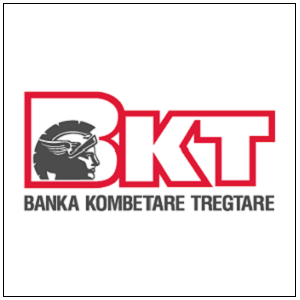Finance
100x Leverage in Trading: High Rewards, Higher Risks

Leverage allows traders to maintain larger positions with less capital investment, increasing both profit potential and risk exposure. With some platforms offering ridiculous ratios of 100x or more, brokers provide leverage to make trading more accessible. High leverage is appealing because it can produce substantial profits from minor price movements. Although brokers promote high leverage as a possibility, it benefits them considerably more than the traders using it.
How 100x Leverage Works
Leverage works through margin trading, which is borrowing money from a broker to boost a trader’s position size. A small deposit, commonly referred to as a margin, serves as collateral in a 100x leverage agreement, allowing a trader to manage an amount 100 times more than their actual capital.
The mechanics of 100x leverage follow a straightforward process:
- Margin of Trader Deposit: Collateral is a fraction of the whole trading volume.
- Brokers Provide Leverage: The trader gains considerably greater control, by doubling their position by 100
- Margin Requirements Apply: Maintaining a small balance will allow the trader to keep the position open.
- Liquidation Risk Increase: If the trade moves 1% against the position, the trader loses all their margin, and the broker abruptly ends the transaction.
For a Bitcoin transaction, say, a 0.5% movement in BTC against a 100x leveraged position results in a notable margin collapse. Should it reach the liquidation level, the broker automatically ends the deal, therefore causing a complete loss to the trader.
Why Do Brokers Offer So High Leverage?
Mostly to attract retail traders and increase trading volume, brokers offer large leverage. Smaller account balance people are particularly drawn to 100x leverage because of the possible large earnings with low capital required.
The low money needed lets traders engage in marketplaces with a modest initial outlay. Driven by more trades resulting from more leverage, increased trading volume increases broker profitability.
Brokers use higher leverage to attract clients, improving their competitive edge. Brokers point out the benefits while lowering the related hazards, which leads many inexperienced traders to be too exposed to high-risk assets.
How Brokers Profit from 100x Leverage
High-leverage trading across several revenue sources ensures that brokers make money regardless of whether or not traders win. Extremely leveraged deals generate fees and increase the likelihood of forced liquidation. How do brokers make a profit?
- Spreads and commissions: Fees are charged on every trade, regardless of outcome.
- Funding rates & overnight fees: Traders holding positions overnight pay fees, adding to broker profits.
- Liquidation profits: When traders get liquidated, brokers reclaim funds at a discount.
- Market making: Some brokers act as counterparties to trades, profiting when traders lose.
The more trades executed with high leverage, the higher the broker’s earnings, making extreme leverage an attractive offering for brokers—but not necessarily for traders.
Regulatory Considerations and Broker Transparency
Leverage restrictions vary according to trader protection regulations and risk concerns. While offshore platforms offer greater leverage and fewer restraints, regulated markets impose limits to avoid dangerous activity. Leverage regulations in key markets:
- S. (CFTC, SEC): 50:1 max leverage for forex; leverage restrictions on crypto.
- Europe (ESMA): 30:1 max leverage for retail traders; stricter margin requirements.
- Japan: 25:1 max leverage to minimize retail investor losses.
- Offshore Brokers: Up to 125x leverage, often with weaker regulatory oversight.
Before using high leverage, traders should carefully review their broker agreements; certain offshore platforms use manipulative strategies like as widening spreads during volatility and sudden margin call triggers.
Alternatives to 100x Leverage for Risk-Aware Traders
Although huge leverage may appear enticing, traders can achieve superior long-term performance through more conservative tactics. Reduced leverage ratios protect profit potential while allowing for acceptable risk. Using 5x-20x leverage is one of the safer options; lesser leverage reduces liquidation risk while improving profits.
He hedges risk with options, futures, or inverse bets rather than taking on too much leverage. Setting stop-loss levels and maintaining a balanced risk-reward ratio can help to structure risk management. Long-term sustainability improves when capital preservation takes precedence over daring risk-taking.
Conclusion
One two-edged blade provides 100x leverage. Despite the high rewards, dealers face significant risks. Spreads, fees, and liquidations allow brokers to profit regardless of trader success. Many traders are drawn to heavy leverage without fully understanding the psychological stress, volatility, and risk of liquidation it creates.
Understanding broker incentives helps traders choose the appropriate leverage. Although some use is beneficial, strict risk management is obviously necessary. Traders can protect their capital while still capitalizing on market opportunities by using decreased leverage, hedging strategies, and structured trade setups.

















































